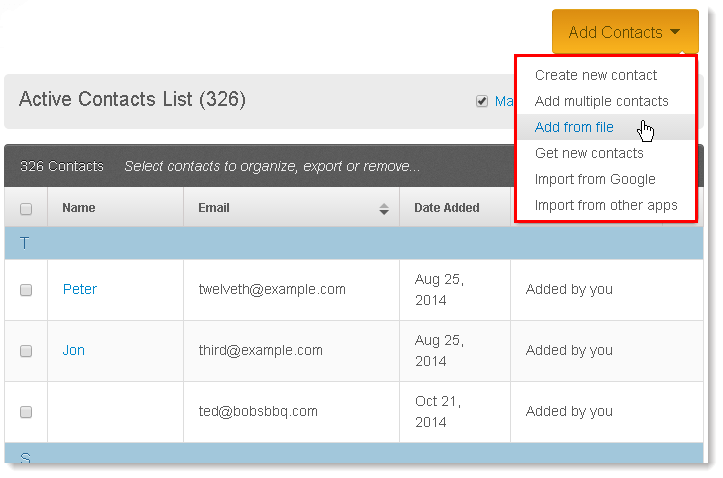Have suggestions for products that you’d like to see reviewed by our real estate technology expert? Email Craig Rowe.
The pitch
Choosing an email marketing tool can be tough.
Not because it’s a complicated category of software, and not because it’s expensive. It’s hard to choose because there are a lot of them. How do you decide which puppy to adopt? You can’t really go wrong. Well, those designer breeds are kind of annoying, like labradoodles or whatever.
But that’s not their fault.
The other issue is that just about every CRM (customer relationship manager) or sales software of some kind comes with email marketing functionality. It’s right there, tied in to your contacts, hot prospects and current clients. So how could you justify using Constant Contact?
The sale
I think stand-alone email marketing clients are for smaller agencies, or agents not overly entrenched in enterprise software; for example, the husband-and-wife teams, and the urban-oriented teams of mobile-savvy agents selling lofts and tiny spaces.
Constant Contact is above all else affordable. At $35 per month for up 2,500 contacts ($15 for up to 500), the financial commitment shouldn’t be a deciding factor. Granted, MailChimp is free for up 2,000 subscribers.
Constant Contact is also super easy. I used it for years and never once needed to peruse through a support forum or contact help. It’s easy to build segments, embed contact forms in your website for contact collection, and like other tools of its ilk, you can track opens, click and forwards.
A standout of Constant Contact that will appeal to agents is its multiple methods of pulling in contacts. You can upload a file, like Excel or a .CSV, import them from a Gmail account, or if you’re migrating from something like ACT! or Salesforce, you can transport them that way, too. Of course, you can also type in a few at a time.
Another slick option in Constant Contact is contact tagging. You’ve heard me rant before about audience segmentation. At risk of repeating myself: It’s crucial.
When you import a new contact, they can be assigned a tag, attaching them to a specific user group within your greater contact list.
A practical application for this would be everyone who visited your most recent open house. Tag them with “Mayflower Ave.,” build your email and send. That’s as easy a way to partition contacts as I’ve come across. Use it.
You can also build segments based on more common methods, like those who opened your last two emails or those who clicked through to the property’s YouTube video. If they’re interested in what you’re sending them, use the tools to keep on top of them. I’ve always been a big fan of the marketing metrics even the most fundamental email marketing solutions now put in our hands. Research firms used to make millions finding out this stuff.
Constant Contact is bullish on list maintenance. And for good reason.
The more uninterested readers you keep on a list, the worse your return-on-send will be. Use its list-purging functionality to rid yourself of apathetic subscribers and bounced accounts. It may be tough to swallow, deleting 10 or 15 contacts every few weeks. But in the end, it’s going to lead to a stronger contact list.
Like MailChimp, Constant Contact has industry standard benchmarks for readership you can use to measure the effectiveness of what you’re sending.
I always found the email-building tools to be pretty simple. But I’m relatively comfortable with drag-and-drop imagery and messing around with graphics. I wager that designing the messages would be your steepest learning curve. Once you got it down though, stay consistent. Don’t overdesign just because you can. You want your readers to recognize your brand. You also want to test what does and doesn’t work. Try one template for a few months, then see if a few simple changes won’t impact readership in some way.
The close
Look, Constant Contact is an easy, affordable and long-proven tool for email marketing. It’s hard to find any drawbacks or areas of complication.
Constant Contact boosts its email marketing with a host of additional pay services, like event promotion, content marketing and a robust survey tool. I’ve not had a chance to peruse these extended branches, but the single source for each could be beneficial.
In summary, I view Constant Contact as a solid, easy-to-use email marketing solution with some compelling features.
But it still costs more than MailChimp.
Do you use Constant Contact? What do you think? Leave a comment and let us know!
Do you have a product for our tech expert to review? Email Craig Rowe.










